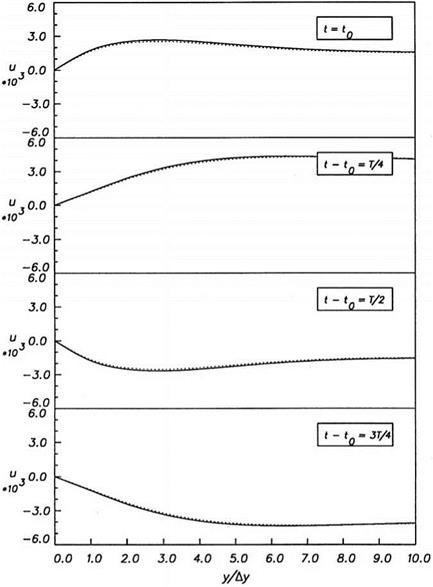Cartesian Boundary Treatment of Curved Walls
The ghost point method has been extended to treat curved walls in two dimensions by Kurbatskii and Tam (1997). In general, depending on the geometry of the boundary curve and the Cartesian mesh, ghost points can be classified into many types. One major difference between the ghost values associated with curved walls and those of a straight wall aligned with a mesh line is that the ghost values are coupled together. They form a linear matrix system that has to be solved at the end of each time step. Another difference is that there is a stronger tendency for a curved wall to generate high wave number (grid-to-grid oscillations) spurious numerical waves. To ensure stability, a large amount of artificial selective damping is necessary (artificial
|
Figure 6.16. Velocity profile of an oscillatory viscous boundary layer at each quarter cycle. Full line is the numerical solution. Dotted line is the Stokes solution. |
selective damping will be discussed Chapter 7). This tends to degrade slightly the quality of the computed solution. A detailed discussion of the method is beyond the scope of this book. Interested persons should consult the original work.












